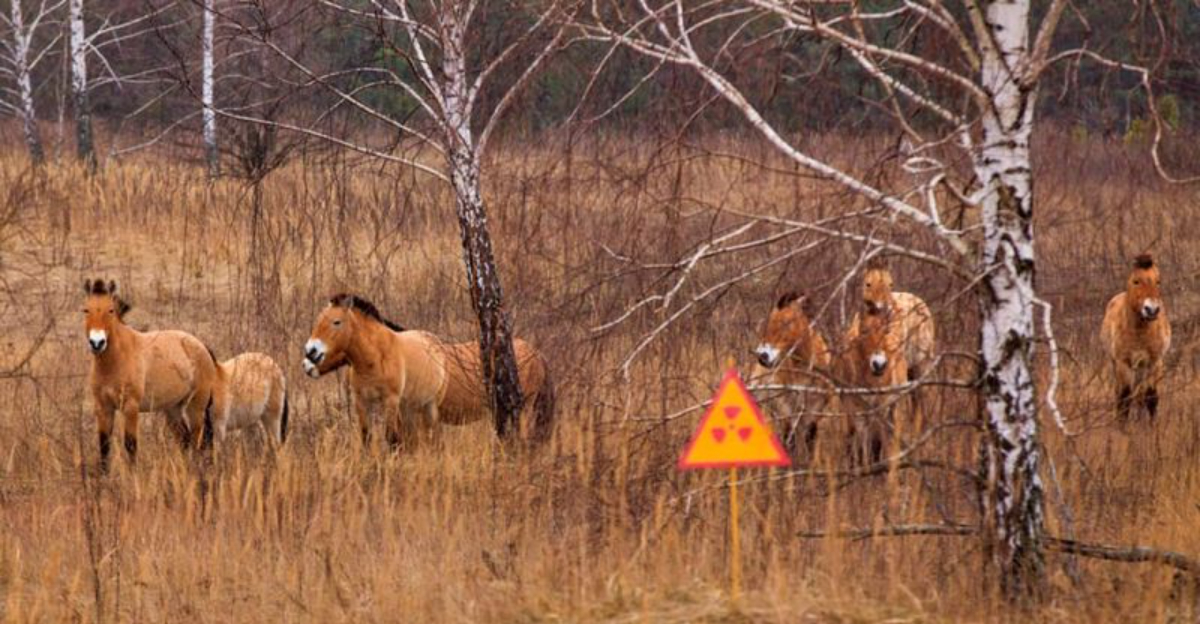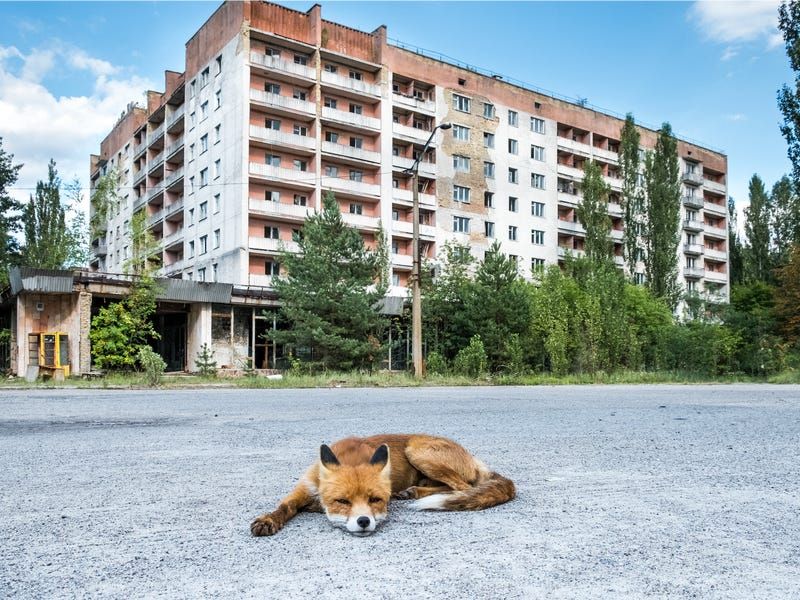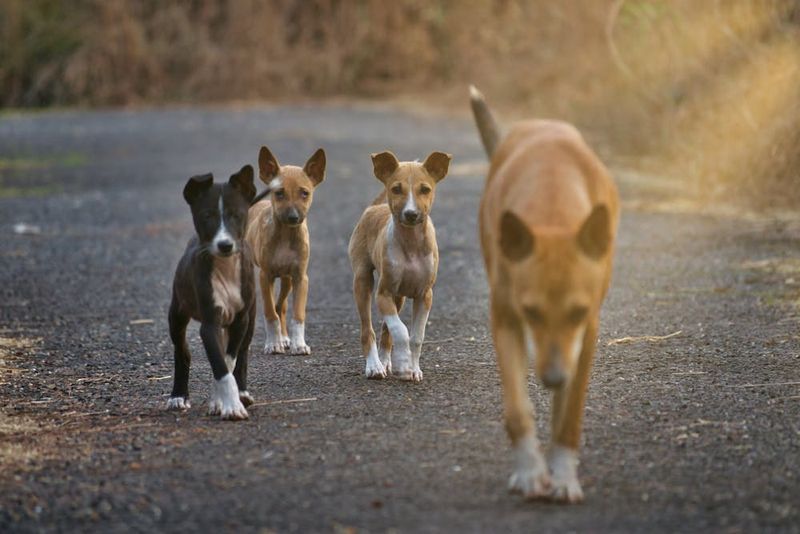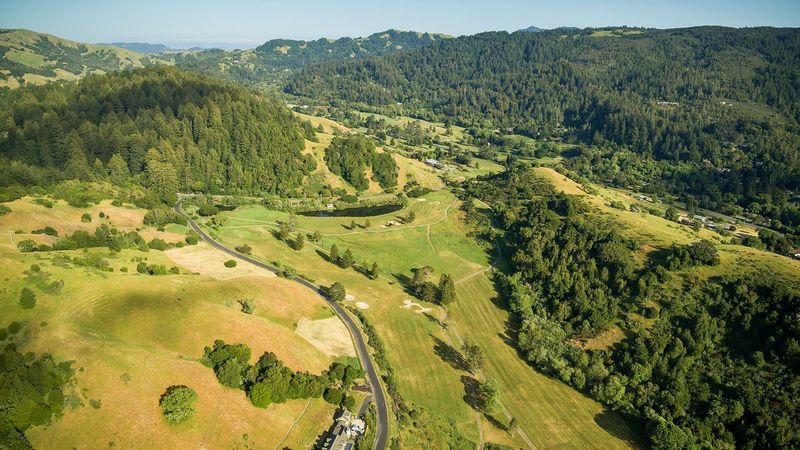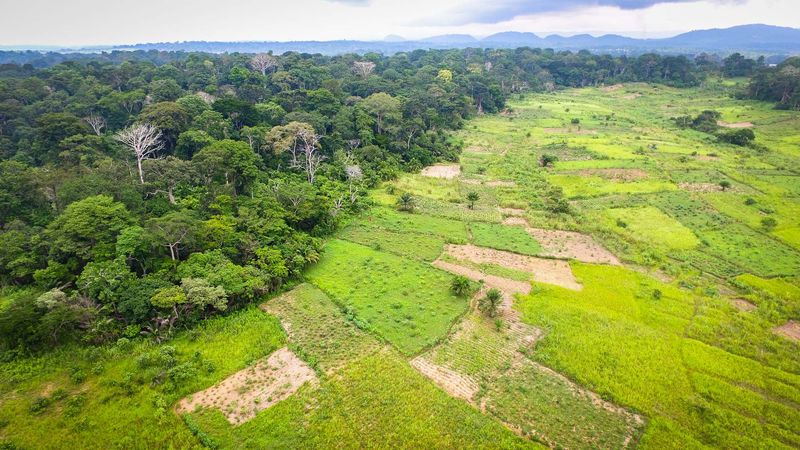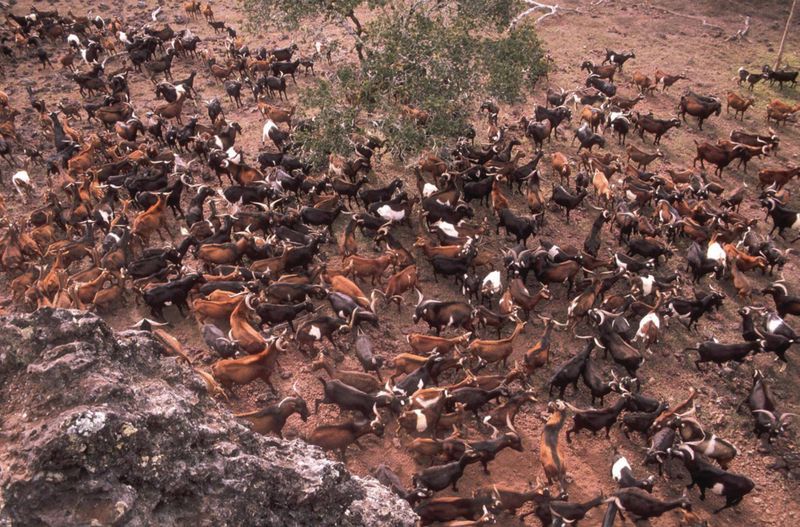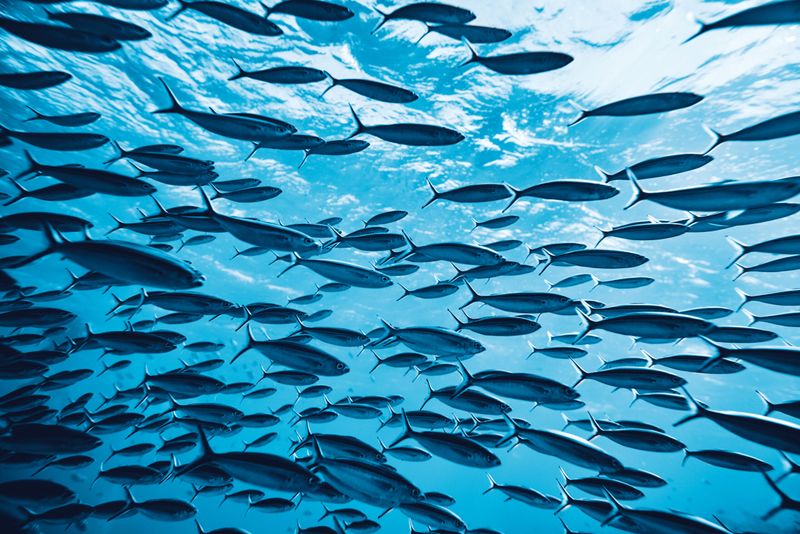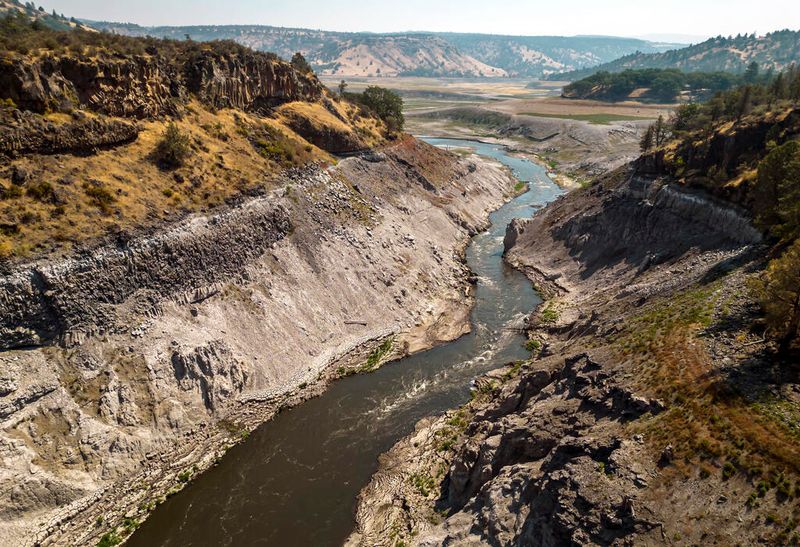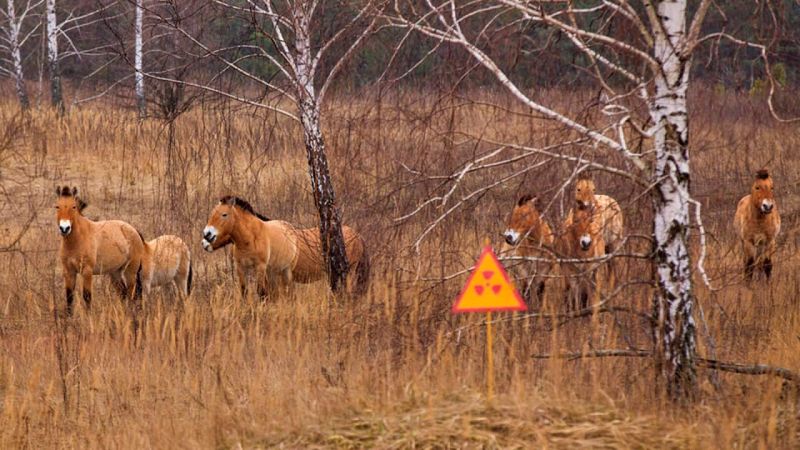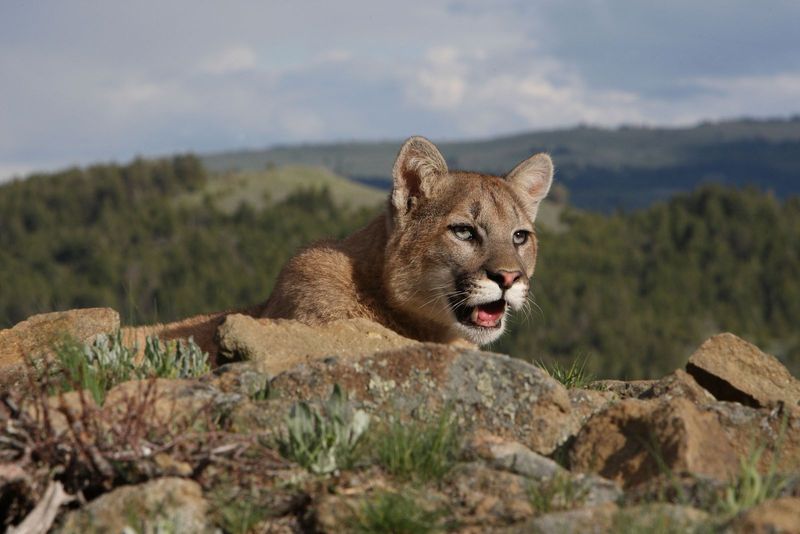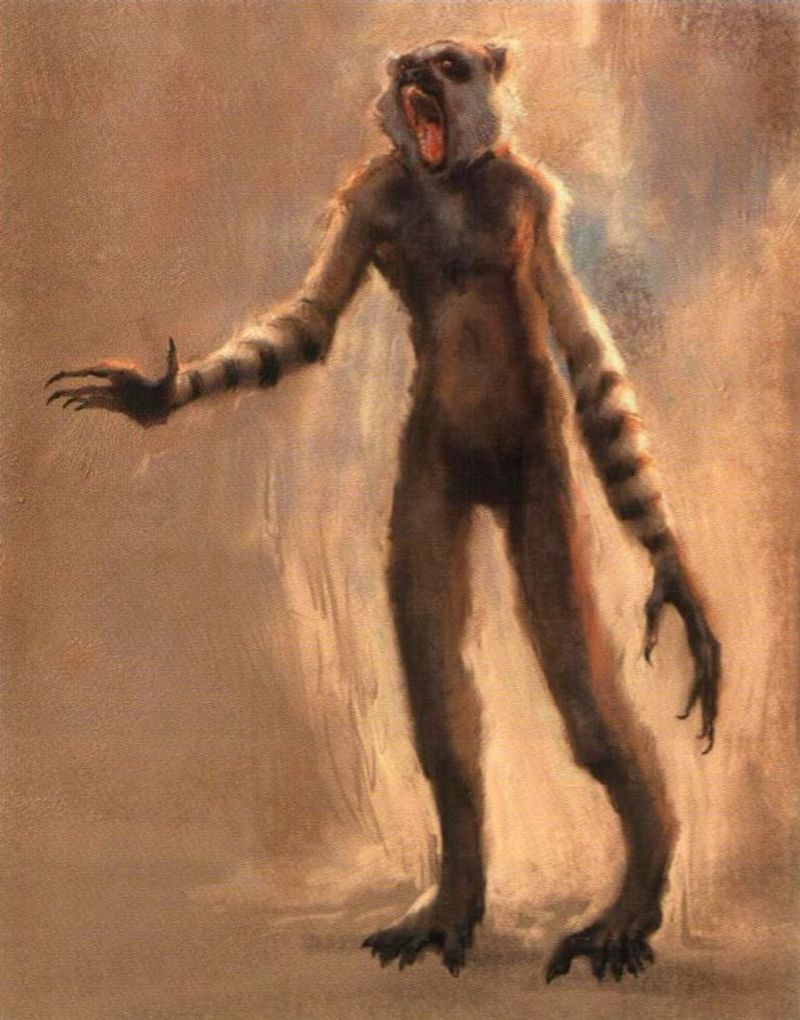Imagine waking up tomorrow to a world without people. No cars honking, no factories smoking, no humans anywhere. What would happen to our planet? Earth wouldn’t stay empty for long. Animals and plants would quickly begin taking back the land we once claimed as our own, transforming our cities, highways, and homes into wild new habitats.
Cities Become Concrete Jungles
Streets once filled with traffic would transform into wildlife corridors. Within days, deer would wander downtown, and birds would nest in abandoned skyscrapers. Squirrels and raccoons would expand their territories, moving into vacant buildings.
Rain and freeze-thaw cycles would crack pavement, creating space for seeds to take root. Within five years, sidewalks would disappear under blankets of weeds and saplings. The Chernobyl Exclusion Zone offers a preview of this transformation – just 30 years after humans left, forests have reclaimed entire towns.
Predators like coyotes and foxes would follow prey into urban centers, establishing new hunting grounds. Without electricity, darkness would return to cities, allowing nocturnal animals to thrive in these concrete canyons that were once human strongholds.
Domestic Animals Face Tough Choices
Our pampered pets would suddenly face a harsh reality. Dogs would form packs, with larger breeds having better survival chances. Small dogs bred for companionship might struggle to find food or defend themselves. Many cats, already skilled hunters, would thrive by returning to their predatory roots.
Farm animals would break free as fences deteriorated. Pigs would quickly adapt, being naturally intelligent and omnivorous. Their descendants would grow tusks and thicker coats within generations, resembling their wild boar ancestors.
Cattle might form wild herds similar to bison or buffalo. Chickens would seek forests for protection, developing stronger wings and flight abilities over time. Most tragically, animals completely dependent on human care – certain dog breeds, zoo animals, and livestock bred for specific traits – would likely disappear entirely.
Highways Transform Into Wildlife Corridors
The vast network of roads crisscrossing continents would slowly disintegrate. Asphalt would crack as plant roots pushed upward, and winter freezes would accelerate the breakdown. Within decades, highways would become green pathways connecting formerly isolated habitats.
Animals once blocked by busy roads would freely migrate again. Deer, bears, and wolves would expand their territories, following these convenient paths between regions. Species previously endangered by habitat fragmentation would recover as these new corridors allowed genetic diversity to flourish.
Bridges would eventually collapse, but river valleys would become natural pathways. Mountain passes, once blasted through for human convenience, would serve as perfect routes for animals moving between ecosystems. The very infrastructure built to connect human settlements would ironically help wildlife reclaim their ancient migratory routes.
Forests Reclaim Lost Ground
Farmland would transform dramatically within just a few growing seasons. Fields of corn and wheat would first become meadows filled with wildflowers and grasses. Pioneer tree species like pine and birch would take root, creating young forests within decades.
Ancient forests that once covered continents would begin their comeback tour. In North America, the eastern deciduous forests would march westward across former farmland. The Amazon would expand its boundaries, reclaiming cleared ranchland and plantations.
This forest regrowth would accelerate as more trees meant more seeds and more wildlife to disperse them. Carbon dioxide levels would gradually decrease as these expanding forests absorbed the greenhouse gases humans had released. Within centuries, Earth’s tree cover would approach prehistoric levels, creating vast new wilderness areas teeming with wildlife.
Invasive Species Battle For Dominance
The disappearance of humans would trigger epic ecological battles worldwide. Invasive species we introduced would either thrive unchecked or face new challenges without human assistance. In Australia, rabbits, cats, and foxes might initially devastate native wildlife before reaching a new balance.
Some invasives would become naturalized parts of their new ecosystems. European starlings in North America would continue competing with native birds, while feral hogs would reshape forest floors across continents. Others would fade away without human help – ornamental plants requiring care would be outcompeted by hardier native species.
The most interesting cases would be in places like the Galapagos or Hawaii, where unique native species might eventually evolve defenses against introduced predators. This global ecological reshuffling would create novel ecosystems unlike anything in Earth’s previous history.
Oceans Heal From Human Damage
Marine life would experience a remarkable revival. Fishing nets would no longer sweep the seas, allowing depleted fish populations to bounce back within decades. Whales, no longer hunted or struck by ships, would return to their historic numbers and migration routes.
Coral reefs, currently threatened by warming and acidification, would slowly recover as carbon dioxide levels stabilized. Plastic pollution would remain a problem for centuries, but eventually would break down or be buried in sediment. The haunting sounds of ship engines would fade, replaced by the natural symphony of waves and marine life.
Coastlines would change dramatically as sea walls and other artificial structures crumbled. Mangroves, salt marshes, and other coastal ecosystems would expand, providing nurseries for marine life and natural buffers against storms. The blue planet would gradually return to a healthier state, with thriving underwater forests and meadows.
Dams Collapse, Rivers Run Free
The concrete giants holding back Earth’s rivers would eventually fail without maintenance. Smaller dams might breach within decades, while massive structures like Hoover Dam could last centuries before surrendering to erosion and structural stress.
Each dam failure would release a dramatic pulse of sediment downstream, temporarily disrupting ecosystems. But in the aftermath, rivers would flow freely for the first time in generations. Migratory fish like salmon would reclaim ancient spawning grounds, their populations exploding as they accessed habitat blocked for decades.
River valleys would reshape themselves, with natural flooding cycles returning to nourish floodplains. Beavers would expand their engineering projects, creating wetland mosaics that support countless species. The restored hydrology would rejuvenate entire watersheds, connecting mountains to oceans through living river systems that once again flow according to nature’s rhythms.
Nuclear Power Plants: Ticking Time Bombs
Without human operators, nuclear power plants would face catastrophic failure. Emergency cooling systems would run until fuel or power depleted, typically within days or weeks. Eventually, hundreds of plants worldwide would melt down, releasing radiation across large regions.
These radioactive zones would create unique evolutionary pressures. As seen in Chernobyl’s Exclusion Zone, some wildlife thrives despite radiation – not because it’s harmless, but because human absence provides advantages that outweigh radiation risks. Wolves, bears, and birds show higher populations in Chernobyl than in neighboring human-inhabited areas.
Over centuries, certain species might develop increased radiation resistance through natural selection. These nuclear disaster zones would become strange evolutionary laboratories where animals with beneficial mutations would survive better than others. Plants would gradually immobilize radioactive particles, slowly cleansing the soil over thousands of years.
New Animal Behaviors Emerge
Without humans as the dominant predator, animal behavior would change dramatically. Fear of humans – deeply ingrained in most wildlife – would gradually fade. Animals would become bolder, reclaiming daylight hours and open spaces they currently avoid.
Predator-prey relationships would rebalance. Wolf packs would hunt more effectively without human interference, controlling deer populations that currently boom without natural predators. Bears would expand their territories into former suburbs, finding rich food sources in abandoned orchards and gardens.
Some of the most interesting changes would occur in highly intelligent species. Ravens, crows, and primates might adapt to use abandoned human tools or structures. Chimps and bonobos could expand their territories as forests regrew, potentially developing more complex tool use over generations. The cognitive abilities that evolved to help animals survive alongside humans would be redirected toward thriving in this new, human-free world.
The Rise of New Dominant Species
Our absence would create evolutionary opportunities for other species to fill our ecological niche. Raccoons, already showing remarkable adaptability and problem-solving skills, might evolve greater intelligence and dexterity. Their descendants could become more sophisticated tool users over millions of years.
Primates like chimpanzees might expand beyond their current ranges as forests regrew. Without human competition or habitat destruction, they could develop more complex social structures and technologies. Octopuses, despite their short lifespans, have the neural complexity that could evolve toward greater intelligence if selective pressures favored it.
The timeline for such evolution would be vast – millions of years, not centuries. The path would be unpredictable, influenced by climate, competition, and chance. But Earth has plenty of time, and evolution has produced remarkable intelligence multiple times already – in apes, elephants, corvids, cetaceans, and cephalopods.
